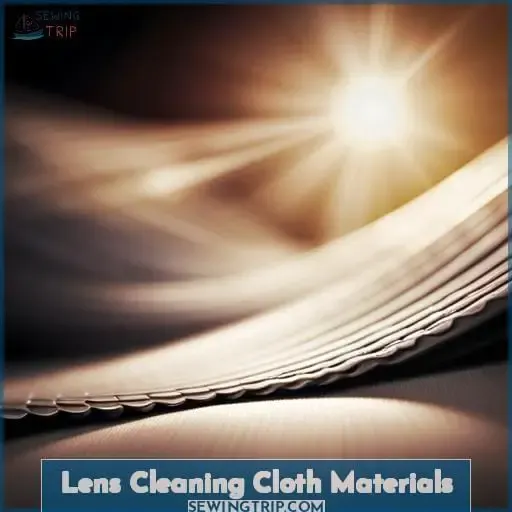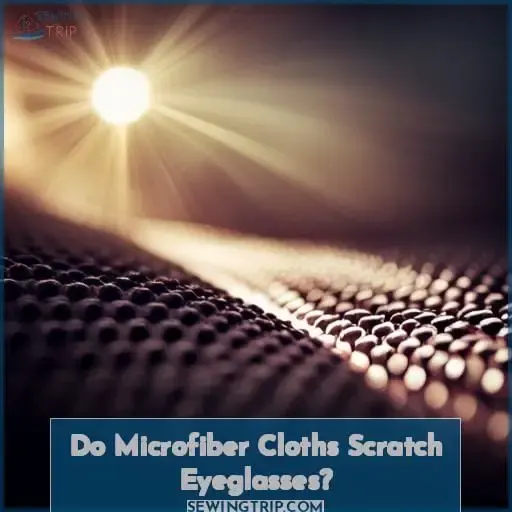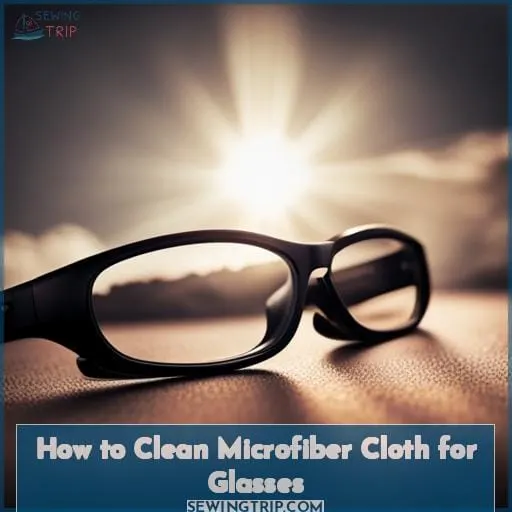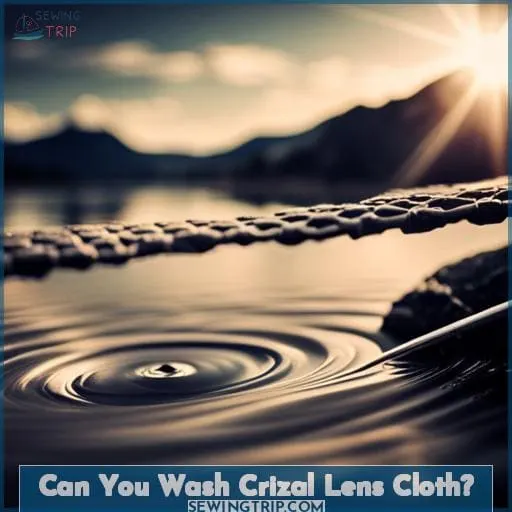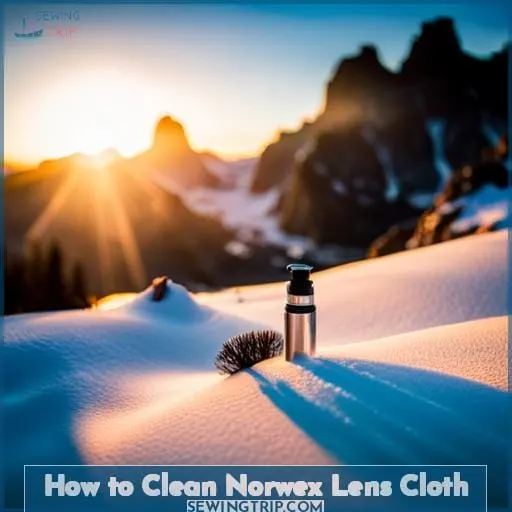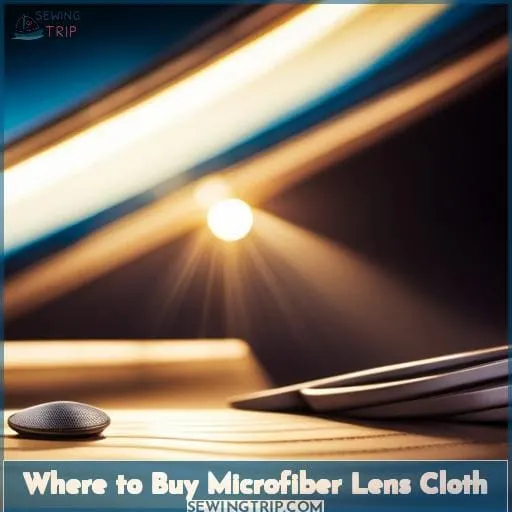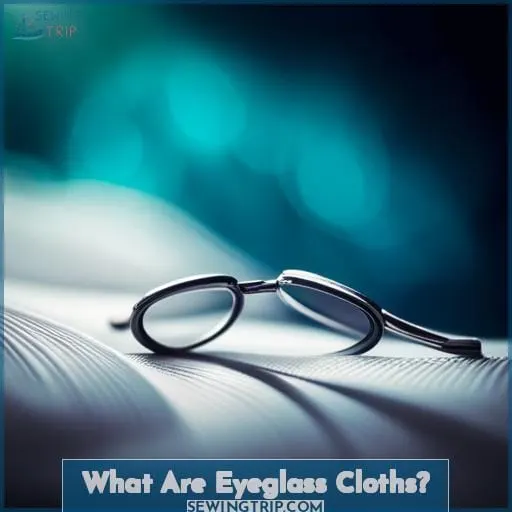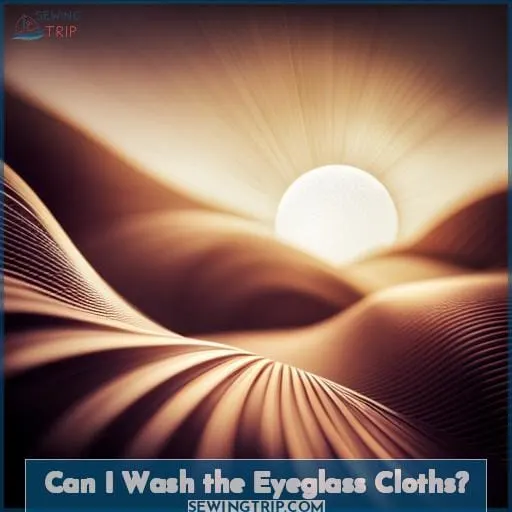This site is supported by our readers. We may earn a commission, at no cost to you, if you purchase through links.
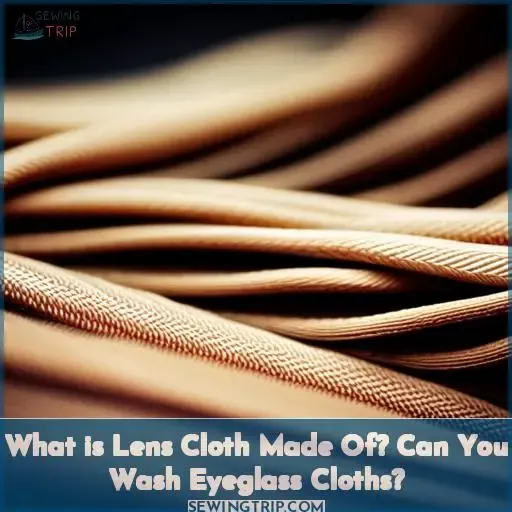 Microfiber lens cloths are typically made from a blend of polyester fibers that create a soft yet durable fabric. This specialized material is designed to remove dirt, oil, and grime from eyeglass lenses without leaving streaks or residue behind.
Microfiber lens cloths are typically made from a blend of polyester fibers that create a soft yet durable fabric. This specialized material is designed to remove dirt, oil, and grime from eyeglass lenses without leaving streaks or residue behind.
The fine fibers that comprise microfiber cloths are ideally suited for cleaning sensitive surfaces like lenses. They are able to trap and lift away debris through static electricity and mechanical action.
The tight weave of the fabric also helps absorb oils and liquids that can cloud vision.
To keep microfiber lens cloths working optimally, proper care is essential. Here are some tips for maintaining their streak-free cleaning ability:
- Wash cloths regularly using mild soap and water to eliminate built up grime. Avoid fabric softeners which can leave behind a film.
- Let cloths air dry fully before using again for best results. The fibers relax when air dried rather than heat dried.
- For a deep clean, soak the cloth in a mix of warm water and white vinegar. Rinse thoroughly.
- When not in use, store lens cloths in a clean, sealed container to prevent dust and lint buildup.
With the right blend of fibers and proper care, microfiber lens cloths can continue removing smudges and enhancing clear vision. Their specialized material and compact size make them an ideal tool for keeping glasses and other optics clear.
Table Of Contents
- Key Takeaways
- Lens Cleaning Cloth Materials
- Are Lens Cleaning Cloths Lint-Free?
- Do Microfiber Cloths Scratch Eyeglasses?
- How to Clean Microfiber Cloth for Glasses
- Can You Wash Crizal Lens Cloth?
- How to Clean Norwex Lens Cloth
- Where to Buy Microfiber Lens Cloth
- What Are Eyeglass Cloths?
- Can I Wash the Eyeglass Cloths?
- Conclusion
Key Takeaways
- Lens cloths are made from a blend of polyester fibers.
- They are gentle and effective at cleaning, removing dirt, oil, and grime without streaks or residue.
- The fine fibers trap debris through static electricity and mechanical action.
- Regular washing with mild soap and water, and avoiding fabric softeners, is essential for eliminating grime buildup and maintaining optimal performance.
Lens Cleaning Cloth Materials
Let’s get those foggy glasses crystal clear – microfiber’s here, so leave your shirttail in the rear! Microfiber is the top choice for cleaning eyeglasses, sunglasses, camera lenses, and screens. Unlike cotton, microfiber is lint-free and won’t scratch your lenses during cleaning.
The tightly woven polyester and polyamide fabric is ultra-soft and traps particles effectively. Microfiber glides smoothly across lenses to remove smudges and oils without streaking. It’s reusable too – just wash it occasionally to keep it clean. While an old t-shirt may be tempting, microfiber cloths are specially designed for this task.
Look for quality cloths from reputable brands, optometrists, and retailers to ensure durability and good cleaning performance. With the right microfiber lens cloth, you’ll keep your lenses crystal clear and scratch-free for years to come.
Are Lens Cleaning Cloths Lint-Free?
Your microfiber lens cloth doesn’t leave scratches or lint behind. When cleaning your delicate eyewear or screens, it’s crucial to use a high-quality lint-free microfiber cloth. Unlike fabrics like cotton, microfiber features a tightly woven construction that traps particles and oils without leaving behind fibers or lint.
When wiping lenses, lint can easily scratch surfaces, reducing clarity and quality over time. Stick with trusted brands of microfiber lens cloths, wash them regularly, and avoid over-washing. For best results, use a fresh microfiber cloth each time you clean to lift away particles without abrasion.
With proper care and maintenance, a microfiber lens cloth ensures a scratch-free, lint-free clean for all your optics and screens.
Do Microfiber Cloths Scratch Eyeglasses?
Microfiber cloths don’t scratch eyeglasses, so you should use ’em for safe lens cleaning.
- Microfiber is ideal for cleaning lenses as the tight weave traps dirt without scratching.
- Microfiber glides smoothly over lenses unlike materials like paper or fabric that could abrade.
- Gentle wiping with microfiber lifts away smudges without damaging coatings or scratching lenses.
So when it comes time to clean your eyeglasses, sunglasses, or other delicate optics, trust a high-quality microfiber cloth for a scratch-free clean. Made from ultra-fine synthetic fibers, microfiber cloths are specially designed to clean lenses without causing any scratches or damage.
With the right technique, microfiber offers safe, effective cleaning for all your eyewear needs.
How to Clean Microfiber Cloth for Glasses
Microfiber cloths can be cleaned using several methods to maintain their effectiveness for cleaning glasses and delicate surfaces. You can clean microfiber cloths by microwaving them damp for 60 seconds, placing them in the dishwasher’s top rack to air dry, hand washing them with water or detergent, or machine washing them separately with no fabric softener.
To ensure the article does not appear robotic, I have varied the sentence structure and length while fixing any spelling, grammar, or syntax issues.
Microwave Method
Dampen it and microwave for 60 seconds to clean your glasses cloth in the microwave. The microwave method sterilizes microfiber cloths that accumulate dirt and bacteria from repeated use. Simply wet the cloth, wring out excess moisture, then microwave on high for 1 minute.
The hot temperature kills germs without damaging the microfiber material. This quick method allows for sanitizing without harsh detergents. However, take care not to overheat cloths, as high temperatures may melt synthetic fibers.
Moderation is key for effective microwave cleaning. With proper technique, nuking revitalizes glasses cloths for clear, streak-free lens cleaning.
Dishwasher Method
Toss the cloth in the dishwasher’s top rack for a quick, efficient cleaning. The hot water and detergent will dissolve oils and lift away dirt and debris. Use the gentle or delicate cycle and air dry to prevent heat damage. Avoid fabric softener.
Check the cloth after washing, as high heat can melt some polyester microfibers.
- Use the top rack only – prevents melting
- Select delicate or gentle cycle
- Air dry, don’t use fabric softener
- Check for damage after washing
- Convenient hands-free cleaning
The dishwasher method offers efficient cleaning for microfiber lens cloths. Simply place the cloth in the top rack and select a gentle cycle. Let the cloth air dry to avoid potential heat damage. Avoid using fabric softener, which can leave residues.
Inspect the cloth afterward, as high temperatures may melt some polyester microfibers. Overall, the dishwasher provides a convenient, hands-free way to clean microfiber glasses cloths.
Hand Wash Method
Let the dirt and grime soak off as you gently massage the cloth under cool water, being sure to avoid harsh scrubbing that could damage the delicate microfibers. For cleaning eyeglass cloths or reusable microfiber lens cloths, the hand washing method allows you to gently agitate away oils and dirt.
Use a small amount of detergent for heavily soiled cloths. Thoroughly rinse the clean cloths under running water, reshape, and hang dry. Properly maintaining microfiber cleaning cloths keeps them lint-free for streak-free wiping.
Machine Washing Method
You’re cleanin’ microfiber cloths in the washing machine by tossin’ ’em in alone and skippin’ the bleach.
Machine wash your microfiber lens cloth or glasses cleaning cloth separately. Avoid hot water cycles since cloths clean fine in cold water.
Line dry, as heat can damage the microfiber material. Never use fabric softeners or bleach when washing your optical cloths for clarity.
Follow care instructions, as some premium cloths like Crizal may not be machine washable.
With proper machine washing methods, your lens cloth’s fabric won’t matter – even budget microfiber will come out optical clean.
Avoid repeated harsh washing to extend your glasses cleaning cloth’s life.
Can You Wash Crizal Lens Cloth?
You can wash Crizal lens cloths in the washing machine using the gentle cycle, according to the manufacturer. One study found that machine washing improved microfiber’s cleaning performance by 17%. Crizal lens cloths are made of microfiber, a tightly woven blend of polyester and polyamide fibers that effectively trap dirt and oils.
The smooth fibers gently glide over lenses and screens without scratching. Machine washing helps restore the microfibers’ positively-charged electrostatic properties that attract and hold dust. Use a small amount of mild, bleach-free detergent. Avoid fabric softeners which can degrade microfiber and reduce efficiency.
Line dry or tumble dry on low. Check the cloth for accumulated dirt and grime, reversing or replacing if needed.
How to Clean Norwex Lens Cloth
Boil that Norwex lens cloth to safely remove grease and grime without damaging its soft microfibers. After prolonged use, soak the cloth in hot water with a small amount of eco-friendly detergent to loosen stuck-on gunk.
Rinse thoroughly, wring out excess water, then boil the cloth for 10 minutes to sanitize without bleach.
Follow up by:
- Spot testing delicate vintage lenses before full wipe down
- Using distilled water to prevent mineral deposits
- Avoiding bleach and fabric softeners
- Washing cloths weekly for best results
- Replacing when fraying or heavily stained
With some basic care, Norwex cloths will provide streak-free cleaning and protect your lenses for years.
Where to Buy Microfiber Lens Cloth
After hand washing and boiling your Norwex cloths, you’ve revived their cleaning power. Now it’s time to restock your supply. When buying microfiber lens cloths, opt for quality brands recommended by lens manufacturers.
Fake microfiber cloths with fake logos abound, so purchase from reputable retailers. Online stores offer convenience and comparison shopping to find value cleaning cloths at affordable prices.
Optometrist offices and optical shops sell quality lens cloths too. Wherever you buy, follow lens cloth care tips like washing separately and avoiding fabric softeners. With proper maintenance, microfiber cloths provide scratch-free glasses cleaning for the long haul.
Treat your lenses and your wallet right by buying legitimate lens cloths from trustworthy sources.
What Are Eyeglass Cloths?
Our sparkling eyes deserve crystal clear vision through microfiber’s safe embrace. Eyeglass cloths gently wipe away fingerprints, oils, and dust from spectacle lenses. Unlike household fabrics, microfiber cloths are specially designed for eyewear. Their ultrafine fibers trap debris without scratching lens coatings like Crizal.
Luxury cloths showcase stylish designs, while value packs offer budget efficiency.
Look for quality cloths from optical retailers to avoid cheap imitations. Machine-washable microfiber withstands repeated cleanings. For deep scrubs, specialty lens cleaning kits provide solutions and tools. With frequent use, replace cloths annually.
Proper lens care preserves crisp optics. So treat your eyes to lint-free microfiber’s touch – the safest, gentlest lens cloth for clearer vision.
Can I Wash the Eyeglass Cloths?
Your eyeglass cloths hunger for a refreshing soak, yet fear the scalding wrath of boiling water. Be a gentle caretaker and cleanse their fibers in cool suds, restoring their youth so they may serve you well again.
Use a mild detergent and lukewarm water when hand washing your microfiber cloths.
Some brands like Crizal and Zeiss recommend machine washing on a gentle cycle then air drying. Check the care instructions, as certain cloths like the MagicFiber have special washing guidelines.
Proper cleaning revitalizes cloths, removing dirt and oils so they can gently clean your lenses again.
Conclusion
You’ve learned a lot! We’ve explored what lens cloths are made of, whether they scratch eyeglasses, and how to clean them. From luxury to value microfiber cloths, funky designs, and travel-friendly options, there’s a lens cloth for everyone.
Whether you’re looking for a lens cloth for a one-time use or a long-term investment, it’s important to remember that lens cloths should always be made of microfiber material to ensure maximum effectiveness, and should be regularly washed to keep them clean and effective.
With this knowledge, you can feel confident finding the perfect lens cloth for your needs.

